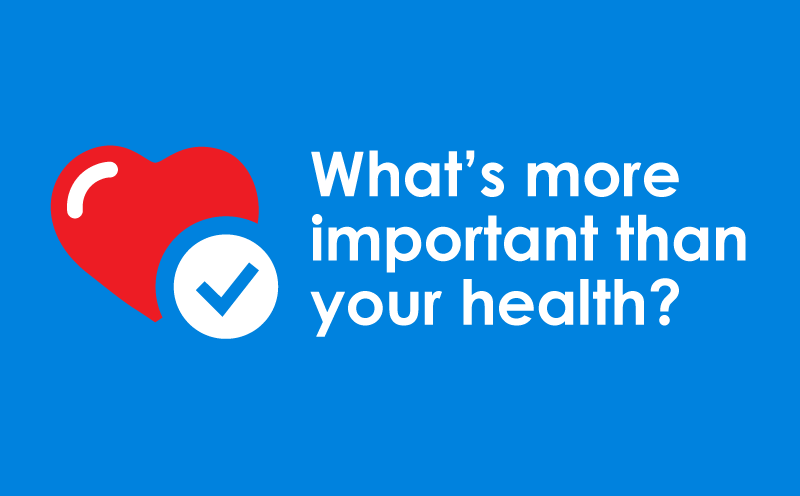Maintaining good health and preventive care is a top priority for individuals and families alike. In recent years, health insurance has increasingly recognized the importance of preventive care. Regular screenings, vaccinations, and wellness visits play a crucial role in identifying potential health risks early on and promoting overall well-being.

Health insurance and preventive care go hand in hand to ensure overall well-being. Health insurance provides financial coverage for medical expenses, including preventive services. Preventive care focuses on maintaining health and preventing illnesses or diseases before they occur or progress. Here’s how they work together:
Coverage for Preventive Services:
Coverage for preventive services by health insurance is a cornerstone of preventive care in healthcare systems. Here’s how it typically works:
Mandated Coverage:
In many countries, health insurance regulations mandate coverage for certain preventive services. These regulations often require insurance plans to cover a range of preventive services without cost-sharing, meaning insured individuals do not have to pay copayments, coinsurance, or deductibles for these services.
Covered Services:
The specific preventive services covered by health insurance plans vary but often include screenings for various conditions (such as cancer, diabetes, and heart disease), vaccinations, counseling for healthy behaviors (such as smoking cessation and weight management), and preventive medications (such as aspirin for heart health or statins for cholesterol management).
Evidence-Based Recommendations:
Insurance coverage for preventive services is typically based on evidence-based recommendations from organizations such as the U.S. Preventive Services Task Force (USPSTF) or the Centers for Disease Control and Prevention (CDC). These recommendations guide insurers in determining which services should be covered and at what frequency.
In-Network Providers:
Coverage for preventive services often requires using in-network providers. This means that insured individuals must visit healthcare professionals who are part of their insurance plan’s network to receive coverage for preventive care. Going out of the network may result in higher out-of-pocket costs or no coverage at all for preventive services.
Regular Check-ups:
Health insurance plans may also cover routine preventive care visits, such as annual wellness exams or regular screenings, to help individuals maintain their health and catch any potential issues early. These visits provide opportunities for healthcare providers to assess overall health, discuss preventive measures, and address any concerns.
Promotion of Regular Check-ups:

Health insurance companies often promote regular check-ups as a fundamental component of preventive care. Here’s how they encourage and support this practice:
Coverage:
Many health insurance plans cover preventive services, including routine check-ups, at little to no cost to the insured. This coverage typically includes annual wellness exams and screenings for conditions such as cancer, diabetes, and heart disease.
Reminders and Outreach:
Health insurance companies may send reminders to their members encouraging them to schedule regular check-ups and screenings. These reminders may be sent via mail, email, or through the insurer’s online portal or mobile app. Additionally, insurers may conduct outreach campaigns to educate members about the importance of preventive care and the services covered under their plans.
Provider Directories:
Insurers often provide members with access to directories of in-network healthcare providers, making it easier for individuals to find a primary care physician or specialist for regular check-ups.
Telehealth Options:
Some health insurance plans offer telehealth services, allowing members to consult with healthcare providers remotely for routine check-ups and follow-up appointments. Telehealth can be especially convenient for individuals with busy schedules or limited access to transportation, making it easier for them to prioritize regular preventive care.
Wellness Programs:
Health insurance companies may offer wellness programs that incentivize members to schedule regular check-ups and participate in preventive care activities. These programs may reward members with incentives such as discounts on premiums or contributions to health savings accounts for completing annual exams, screenings, or health assessments.
Disease Prevention and Management:

Disease prevention and management are essential components of both health insurance and preventive care strategies. Here’s how health insurance and preventive care work together in this context:
Coverage for Preventive Services:
Health insurance plans typically cover preventive services aimed at disease prevention and management. These services may include vaccinations, screenings, counseling for healthy behaviors, and preventive medications. By covering these services without cost-sharing, insurers encourage individuals to engage in preventive measures that can help prevent or manage various diseases and conditions.
Chronic Disease Management Programs:
These programs may include personalized care plans, regular monitoring, education about self-management strategies, and access to support resources. By actively managing chronic conditions, insurers aim to improve health outcomes, reduce complications, and lower healthcare costs associated with these conditions.
Access to Healthcare Providers:
Health insurance plans provide access to healthcare providers who can help prevent and manage diseases through regular check-ups, screenings, and ongoing medical care.
Medication Coverage:
Health insurance often covers medications prescribed for disease prevention and management, including those used to control chronic conditions such as high blood pressure, diabetes, and cholesterol. By providing coverage for these medications, insurers help ensure that individuals can afford and adhere to their treatment regimens, which can lead to better disease management and improved health outcomes.
Wellness Programs and Incentives:
Some health insurance plans offer wellness programs and incentives aimed at promoting healthy behaviors and preventing chronic diseases. These programs may include incentives for participating in activities such as exercise programs, smoking cessation programs, weight management programs, and health screenings.
Focus on Wellness Programs:
Wellness programs offered by health insurance providers are an integral aspect of preventive care, aiming to promote healthy behaviors and prevent the onset of chronic diseases. Here’s a closer look at how these programs function within the framework of health insurance and preventive care:
Promoting Healthy Behaviors:
Wellness programs often encourage individuals to adopt and maintain healthy behaviors such as regular exercise, balanced nutrition, stress management, and smoking cessation. These behaviors are crucial for preventing a wide range of health conditions, including obesity, heart disease, diabetes, and certain types of cancer.
Incentives and Rewards:
Health insurance companies may offer incentives and rewards to motivate participants to engage in wellness activities. These incentives can take various forms, such as premium discounts, cash rewards, contributions to health savings accounts, or gift cards. By providing tangible benefits, insurers encourage members to actively participate in wellness programs and prioritize their health.
Access to Resources and Support:
Wellness programs often provide access to resources and support services designed to help individuals achieve their health goals. By offering a comprehensive support system, insurers empower individuals to make positive lifestyle changes and adopt healthier habits.
Screenings and Health Assessments:
Some wellness programs include health screenings and assessments to identify risk factors for chronic diseases and provide personalized recommendations for preventive care. These screenings may assess factors such as blood pressure, cholesterol levels, body mass index (BMI), and blood sugar levels.
Disease Management Support:
Wellness programs may offer support for individuals with existing chronic conditions, helping them manage their health more effectively and prevent complications. By addressing the needs of individuals with chronic conditions, insurers can improve health outcomes and reduce healthcare costs over time.
Financial Protection for Unexpected Illnesses:

Financial protection for unexpected illnesses is a critical aspect of health insurance and preventive care. Here’s how health insurance provides this protection and how preventive care contributes to it:
Coverage for Medical Expenses:
Health insurance provides coverage for a wide range of medical expenses, including those related to unexpected illnesses. This coverage typically includes hospitalizations, surgeries, medications, diagnostic tests, and other necessary treatments. Without health insurance, the cost of these services can be financially devastating for individuals and families.
Preventive Services Coverage:
Health insurance plans often cover preventive services at little to no cost to the insured. By investing in preventive care, individuals can identify and address health issues early, potentially avoiding more costly treatments down the road. Preventive services may include screenings, vaccinations, counseling, and other interventions aimed at maintaining health and preventing diseases from progressing.
Early Detection and Treatment:
Preventive care plays a crucial role in early detection and treatment of illnesses. Regular check-ups and screenings can help identify health problems in their early stages when they are easier and less expensive to treat. By addressing health issues proactively, individuals can avoid more extensive and costly medical interventions that may be necessary if conditions are left untreated or allowed to progress.
Reduced Healthcare Costs:
Investing in preventive care can lead to significant cost savings for both individuals and the healthcare system as a whole. By preventing illnesses or detecting them early, individuals may require fewer medical interventions, hospitalizations, and emergency room visits, which can result in lower overall healthcare costs.
Financial Stability:
Knowing that they have coverage for medical expenses can alleviate the financial stress and uncertainty that can accompany health issues. This allows individuals to focus on their health and well-being without worrying about the financial implications of seeking medical care.
Conclusion:
Overall, health insurance plays a crucial role in supporting preventive care by making essential services more accessible and affordable. By investing in prevention, individuals can maintain better health outcomes, reduce healthcare costs, and lead healthier lives in the long run.

Recent Comments